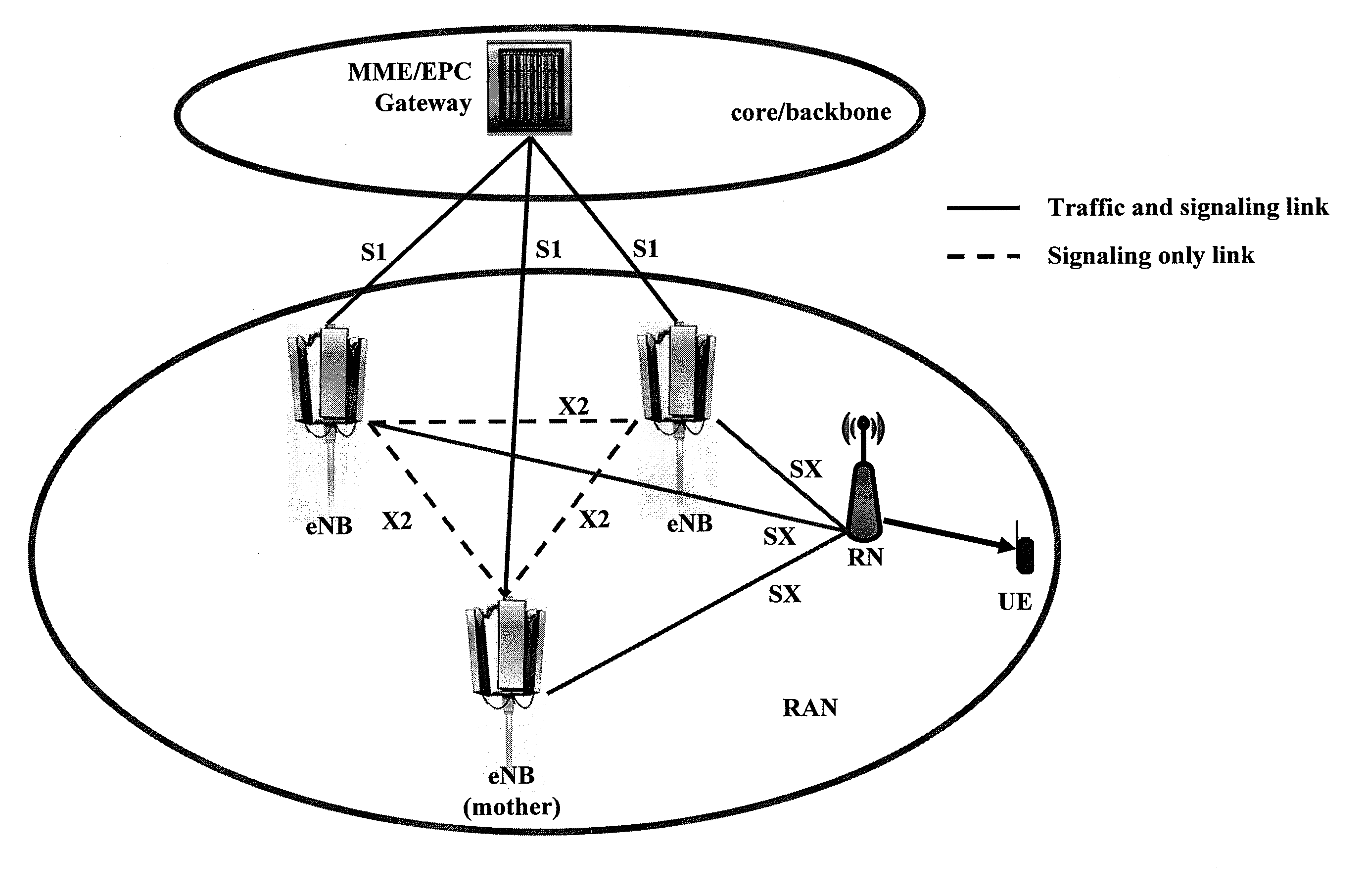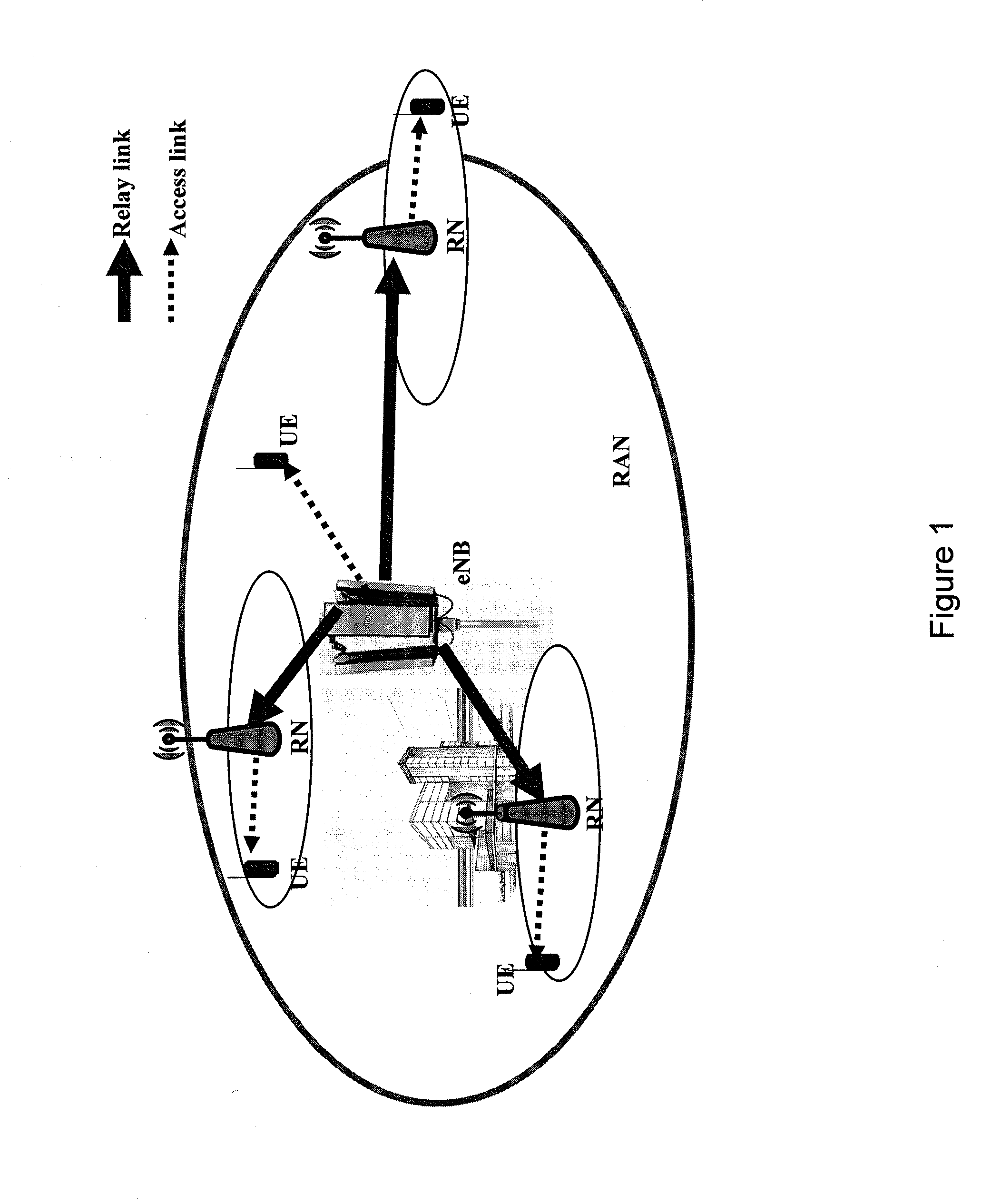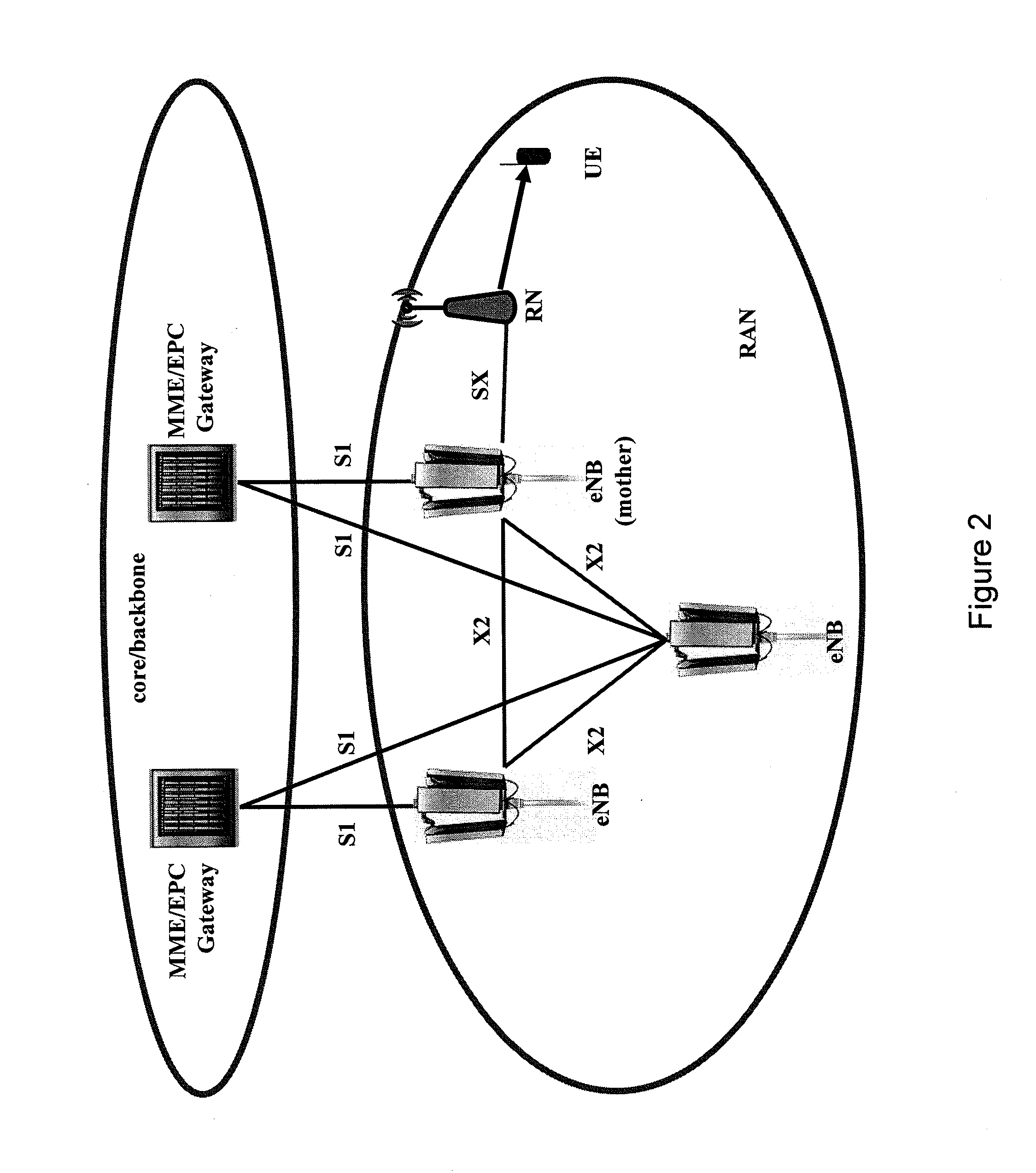Load Balancing in Relay-Enhanced Access Networks
a load balancing and access network technology, applied in data switching networks, frequency-division multiplexes, instruments, etc., can solve problems such as system performance degradation, limit system performance, and limit system performan
- Summary
- Abstract
- Description
- Claims
- Application Information
AI Technical Summary
Benefits of technology
Problems solved by technology
Method used
Image
Examples
Embodiment Construction
The present invention and its embodiments are made to provide for a feasible solution for facilitating efficient load balancing in relay-enhanced access networks.
According to an exemplary first aspect of the present invention, there is provided a method being operable at a backbone device of a backbone network, comprising acquiring resource information of multiple access devices of an access network, said resource information indicating resource availability and resource assignment of said multiple access devices for establishing multiple connections between said backbone device and a relay device of said access network via said multiple access devices, setting multiple links between said backbone device and said multiple access devices, and managing resource allocation of said multiple links between said backbone device and said multiple access devices in accordance with said resource information.
According to further developments or modifications thereof, one or more of the followi...
PUM
 Login to View More
Login to View More Abstract
Description
Claims
Application Information
 Login to View More
Login to View More - R&D
- Intellectual Property
- Life Sciences
- Materials
- Tech Scout
- Unparalleled Data Quality
- Higher Quality Content
- 60% Fewer Hallucinations
Browse by: Latest US Patents, China's latest patents, Technical Efficacy Thesaurus, Application Domain, Technology Topic, Popular Technical Reports.
© 2025 PatSnap. All rights reserved.Legal|Privacy policy|Modern Slavery Act Transparency Statement|Sitemap|About US| Contact US: help@patsnap.com



